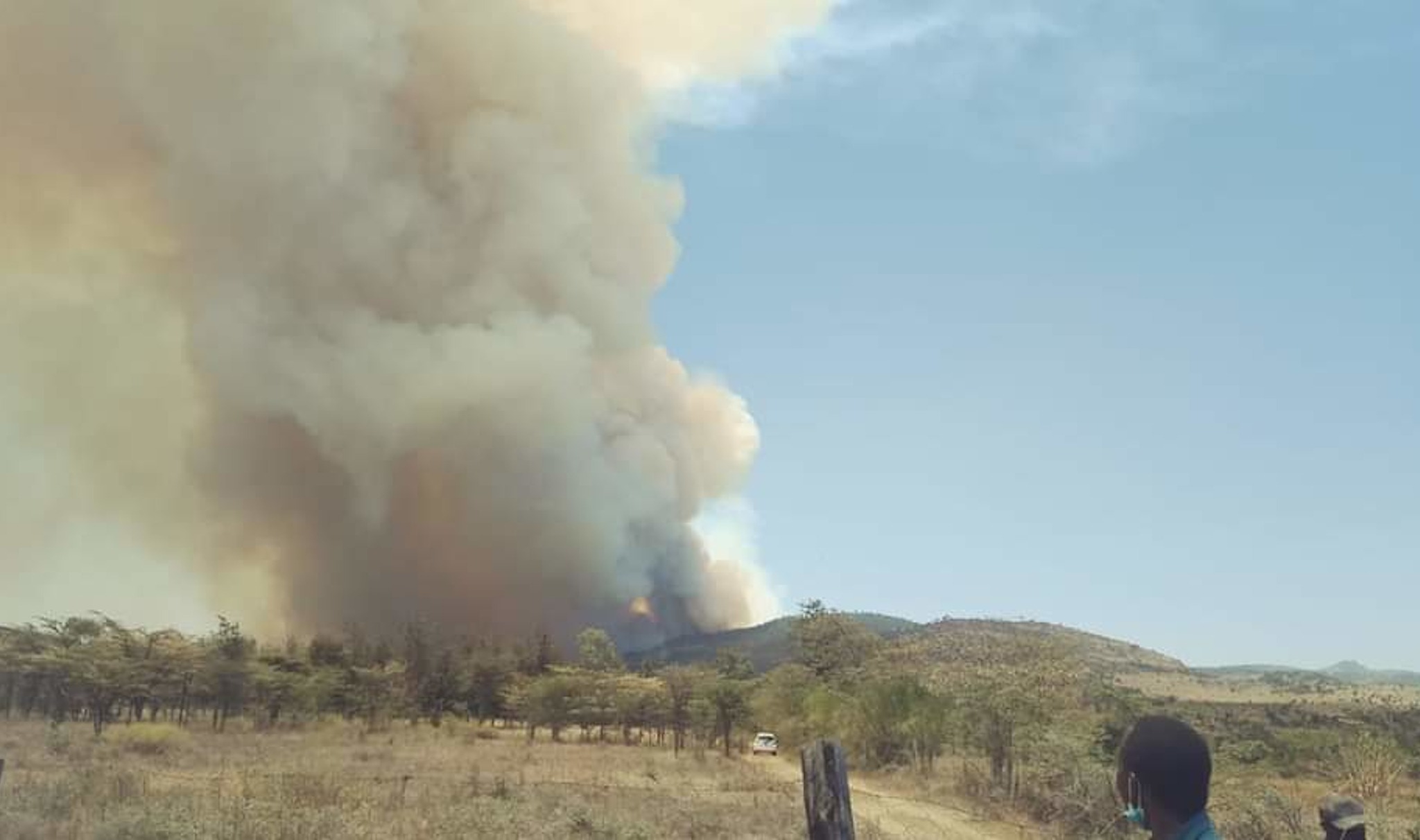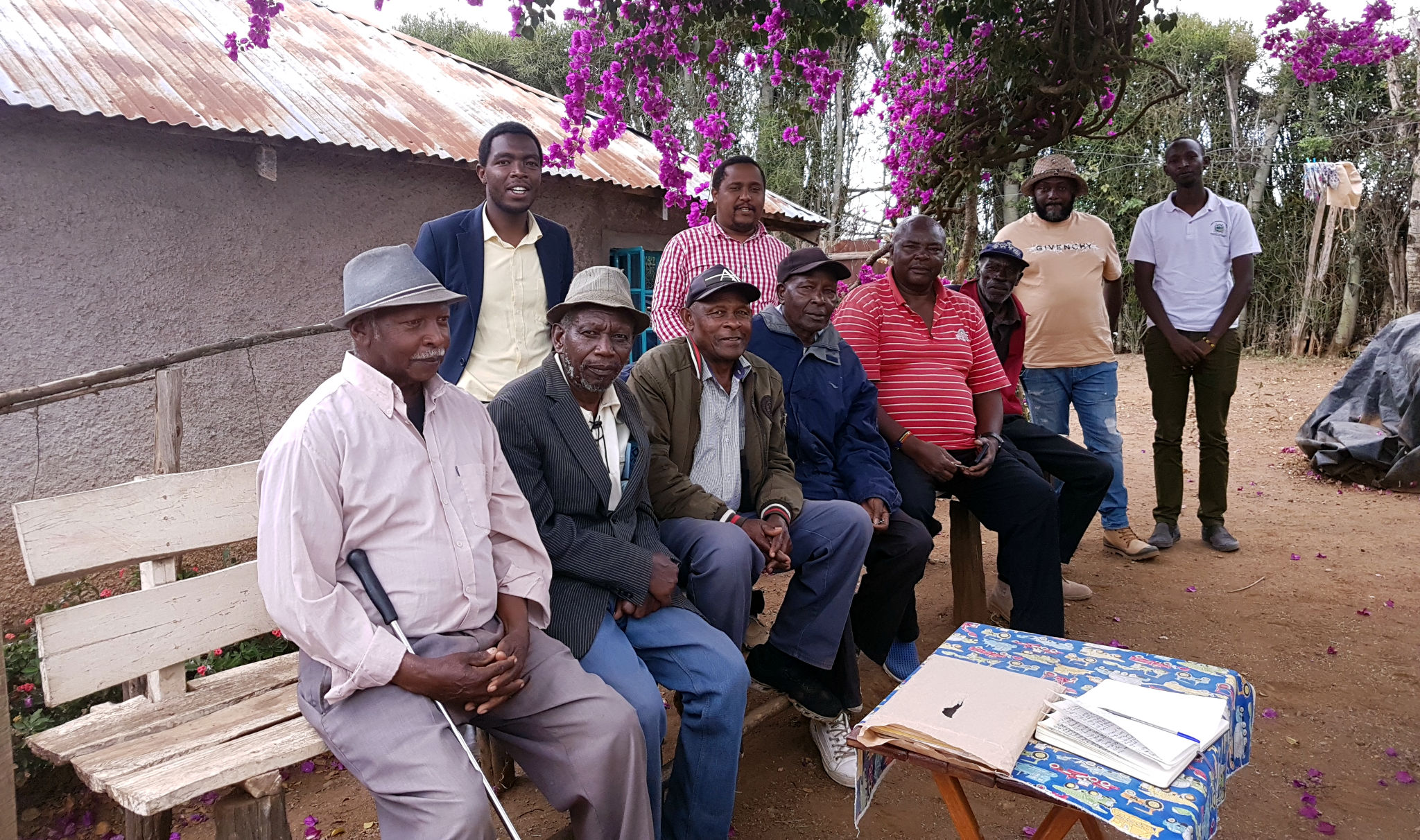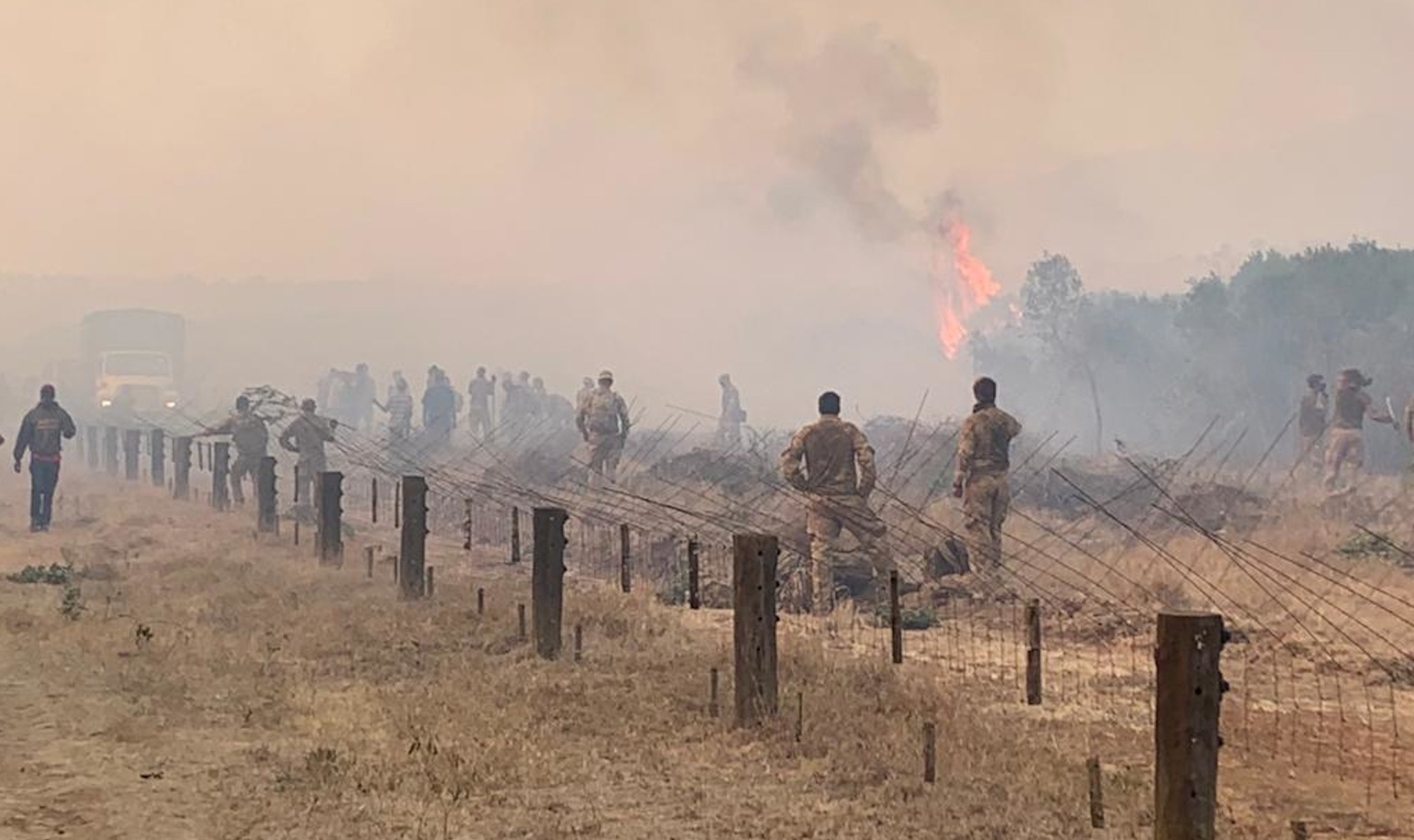The scale of environmental destruction caused by British soldiers exercising at a nature conservancy in Kenya has been revealed for the first time.
A cooking accident by UK troops two years ago today set fire to Lolldaiga Hills, a safari resort home to elephants and lions near Mount Kenya.
The smoke plume was so large that ash particles reached Lake Victoria on the Tanzanian border, some 200 miles away.
Now a new report by Howard Humphreys has calculated Lolldaiga’s burnt landscape will take until 2060 to recover, if climate change does not prevent it from doing so.
More than a quarter of a million seedlings need to be planted to replace torched trees, the consultancy firm said.
One of the main tree species at Lolldaiga, the African Pencil Cedar – a threatened conifer protected by Kenyan presidential decree – was virtually wiped out.
So much biomass was burnt during the incident that 178,000 tonnes of carbon dioxide, methane and nitrous oxide were emitted.
That figure is equivalent to 7% of the UK military’s total greenhouse gas emissions for 2020-21, which officially stood at 2,527,000 tonnes and did not count fumes from the fire.
A Ministry of Defence spokesperson told Declassified: “Emissions relating to this incident in Kenya aren’t included in the figures for 2020/21, and it would be inappropriate to comment further while an investigation is ongoing.”
Many of the MoD’s declared emissions came from British fighter jets, tanks and battleships that together consumed more than 500 million litres of fuel.
So for an accidental forest fire at a wildlife reserve to emit almost a tenth as much will undermine the army’s attempts to appear environmentally responsible.
It would take nearly half a million average Kenyans a year to emit the same amount of CO2.
Dr Stuart Parkinson, a scientific expert who analysed the report for Declassified, said: “This fire shows the importance of the MoD counting its whole carbon footprint.
“If just one accidental fire in a training area can destroy a forest leading to an extra 7% of the organisation’s carbon emissions, then what might the impacts of its worldwide military operations be causing?”
Smoke inhalation
The 175-page Howard Humphreys report was commissioned by Lolldaiga Hills Limited, the company that owns the ranch.
It is likely to feature prominently in a compensation case brought against the British army by more than 5,500 local Kenyans who claim to have suffered damage from the fire.
While the report highlights some major environmental impacts, it takes a conservative view of the fire’s significance beyond the perimeter of the ranch – where the majority of those seeking compensation reside.
They include Maasai herders who say tens of thousands of their cattle died from a smoke-related illness soon after the fire. There are also many complaints of chronic breathing problems and even blindness.
Declassified met one claimant, Samuel Lokure, who said: “I’ve been really affected. My eyes, my nose, my whole breathing system. Before I was able to see. But for now I don’t really see well. My eyes are itching every day. I’m totally disabled.”
Yet the report said the smoke only caused “minor” damage to air or water quality, and “no widespread impact on human health [is] likely to have arisen due to dispersal of [the smoke] plume.”
Flaws
Several shortcomings in the scientific study are acknowledged by Howard Humphreys, most notably that it took place a year after the fire and “the directive of the client to sample within the Ranch is a limitation to assessment.”
At one point, the Howard Humphreys team appears to downplay the significance of forest fires, calling them a “common occurrence in Kenya”. They omit the fact the British army sparked five smaller fires in the month before the Lolldaiga blaze.
The report also wrongly asserts British military training at Lolldaiga only began in 2009. The ranch was in fact used much earlier, not least in 2007 when a man working for the British army was killed in an explosion.
It does however reveal that solar panels and two residential camps housing ranch workers were destroyed by the fire, together with their personal belongings.
Even then, the death of conservancy worker Linus Murangiri, who was crushed by a lorry while fighting the fire, is only mentioned as a “second order impact” without naming him.
Selective study
By focusing only on the damage inside the ranch, the report sheds little light on the wider impact to neighbouring communities who have applied for compensation.
We learn “wildlife escaped from the Ranch during the fire incident and fled to the community living on the southern part of the Ranch, [where] the wildlife destroyed some farm crops”.
It goes on to say “however, wildlife fence breeches are a regular occurrence in the area” and “the study was not able to verify/quantify the extent of crop damage.”
There is no mention of the fact local farmers asked to participate in the Howard Humphreys study so their losses could be calculated.
Nor does it reflect that fence breaches are a historic grievance that neighbouring farmers have raised with Lolldaiga’s owners for more than 20 years.
When the local community attempted to crowdfund for its own scientific study of the environmental damage, five of the lead petitioners were arrested for ‘extortion’.
The charges were dropped after the elderly group spent an uncomfortable night in police custody.
Delays
Howard Humphrey’s environmental impact report was shared with petitioners last week by the body adjudicating their claims, the Inter-Governmental Liaison Committee (IGLC).
It had previously been denied to the media and freedom of information requesters.
The IGLC is an obscure UK-Kenyan body, co-chaired by a British army brigadier. As well as providing the report, it published its own rules for the first time.
The body said it reserves the right “at its sole discretion, [to] extend any time-frame” and indicated the compensation claims might not be settled until May 2024 – more than three years after the fire.
Robert Wells – who owned Lolldaiga at the time of the fire – has since sold the ranch, which his family acquired during British imperial rule.
Other descendents of European settlers continue to own vast farms in Kenya. They are often marketed as wildlife conservancies while also hosting military exercises for the former colonial power.
Carbon offsets
British troops are not the only ones facing scrutiny over their ecological impact in Kenya.
Survival International has published a new report criticising a carbon offset scheme north of Lolldaiga.
The area, which is mostly inhabited by nomads, is being marketed as a vast carbon sink by the Northern Rangelands Trust (NRT), a controversial conservation group.
NRT claims that by encouraging nomadic herders to adopt new grazing practices they can restore grasslands, which will absorb 50 million tonnes of CO2.
The NRT’s chief, former big game hunter Ian Craig, received a conservation award in December from Prince William, who used to date his daughter.
Survival International believes the NRT scheme is “fundamentally flawed” and questions whether nomadic communities have consented.
Campaigner Fiore Longo said: “This project is not just dangerous greenwashing, it’s blood carbon: NRT is making money by destroying the way of life of those least responsible for climate change.”




